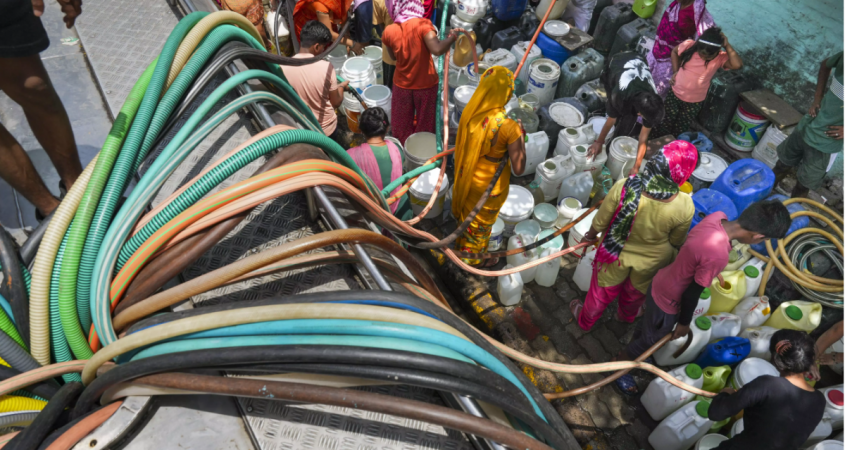
The escalating water crisis in India could trigger social unrest in the world's largest democracy, causing its credit health to deteriorate, an analysis said.
In its latest report, Moody's Investors Services said that a shortfall in water supply could disrupt agricultural production in the nation, resulting in inflation in food prices, and finally affecting the credit health of sectors that are heavily dependent on water.
Industrialization driving water scarcity in India
According to the US-based credit rating agency, the country's rapid economic growth and accompanied by strengthening industrialization and urbanization are the crucial factors which is resulting in water scarcity in India.
"This is detrimental to the credit health of the sovereign, as well as sectors that heavily consume water, such as coal power generators and steel-makers. In the long term, investment in water management can mitigate risks from potential water shortages," said Moody's in the report.
It added: 'Decreases in water supply can disrupt agricultural production and industrial operations, resulting in inflation in food prices and declines in income for affected businesses and communities, while sparking social unrest. This in turn can exacerbate volatility in India's growth and undermine the economy's ability to withstand shocks."
According to Moody's the heatwave in India which happened in 2024 has strained water supply in Delhi and several northern states.
Moreover, India is also witnessing a fall in rainfall which is creating a negative impact on water availability.
In 2023, monsoon rainfall in India was 6 percent less than the average for 1971-2020, the report added highlighting that more than 60 percent of rainfall in India is concentrated in June-September each year.
Per capita water availability projected to fall in coming years
Citing a report from Ministry of Water Resources data, the US-based firm noted that India's average annual water availability per capita is likely to drop to 1,367 cubic meters by 2031 from an already-low 1,486 cubic meters in 2021.
The report highlighted that any level below 1,700 cubic meters indicates water stress, while a level below 1,000 cubic meters denotes water scarcity.
Moody's further pointed out that the Indian government is heavily investing in water infrastructure and making a push for the development of renewable energy, which could help mitigate water management risks in the future.









!['Had denied Housefull franchise as they wanted me to wear a bikini': Tia Bajpai on turning down bold scripts [Exclusive]](https://data1.ibtimes.co.in/en/full/806605/had-denied-housefull-franchise-they-wanted-me-wear-bikini-tia-bajpai-turning-down-bold.png?w=220&h=138)



